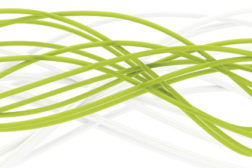Articles by Dave Engebretson
Upgrade the Easy Way
Now integrators can fork-lift IP device upgrades without pulling new cable, thanks to new technologies that use coax cables for IP and PoE transmission.
September 6, 2012
Get our new eMagazine delivered to your inbox every month.
Stay in the know on the latest security marketplace trends.
SUBSCRIBE TODAY!Copyright ©2024. All Rights Reserved BNP Media.
Design, CMS, Hosting & Web Development :: ePublishing



